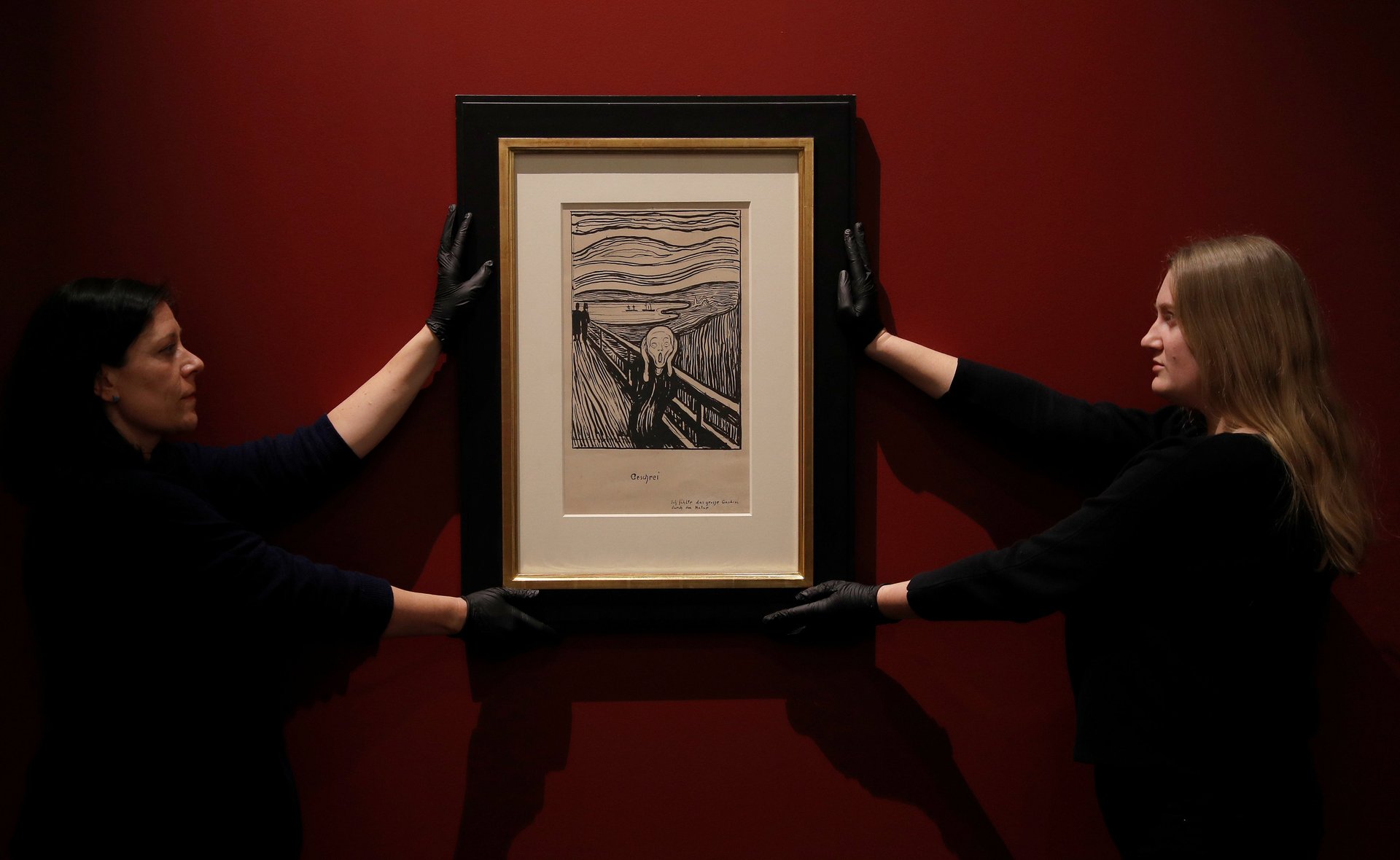“The Scream” isn’t screaming, but the real story is even more disturbing
A new exhibit at the British Museum seems to clear up a longstanding debate. The figure in the painting is not screaming, but hearing a scream.


A new exhibit at the British Museum seems to clear up a longstanding debate. The figure in the painting is not screaming, but hearing a scream.
In a new exhibit titled Edvard Munch: Love and Angst, the museum features a lithograph version of the image that predated the iconic 1893 painting. Scrawled along the bottom is an inscription by the artist: “I felt the great scream throughout nature.”
The cryptic sentence refers to a walk Munch took near a fjord overlooking Oslo. He described it in a diary entry headed “Nice 22 January 1892”:
I was walking along the road with two friends – the sun was setting – suddenly the sky turned blood red – I paused, feeling exhausted, and leaned on the fence – there was blood and tongues of fire above the blue-black fjord and the city – my friends walked on, and I stood there trembling with anxiety – and I sensed an infinite scream passing through nature.
Another bit of supporting evidence: The painting’s original German title was “Der Schrei der Natur,” or “The Scream of Nature.”
“He was trying to capture an emotion or moment in time,” Giulia Bartrum, curator of the new exhibit, told the Telegraph. “Through the inscription we know how he felt. People think this is a screaming person but that’s not what is going on.”
Other Munch scholars, including Gunnar Soerensen, the former director of the Munch Museum in Oslo, leave a little more room for nuance. “It could be a scream in nature or a person screaming,” he told the Today Show. “It is a question of interpretation.”
Regardless, the new interpretation may require some updates to the all-important global emoji database, which describes 😱 as “a yellow face screaming in fear, depicted by wide, white eyes, a long, open mouth, hands pressed on cheeks, and a pale blue forehead, as if it has lost its color,” which “evokes Edvard Munch’s iconic painting The Scream.”